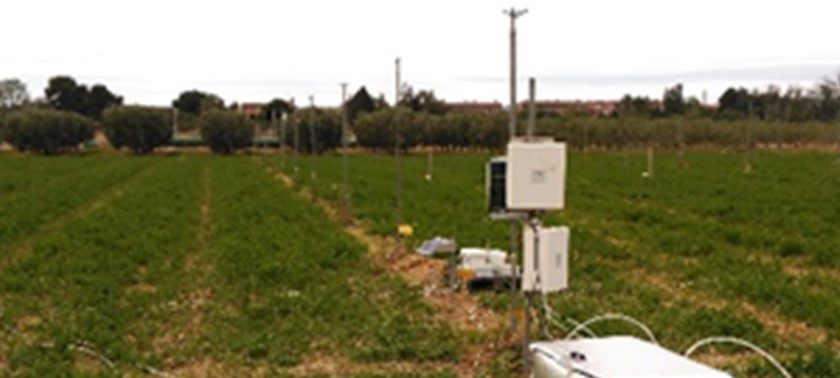Article published:
ISLA, R., GUILLÉN, M., MEDINA, E.T., LATORRE, B., QUÍLEZ, D., CAVERO, J. 2022. Greenhouse gas emissions associated to sprinkler-irrigated alfalfa under semi-arid Mediterranean conditions. Spanish Journal of Agricultural Research 20(3) e0304.
Open access:
https://doi.org/10.5424/sjar/2022203-18416
Abstract:
Alfalfa is one the most important forage legume crops worldwide, but little information is available regarding to its greenhouse gas emissions (GHG) under Mediterranean sprinkler-irrigated conditions. This research aims at documenting emissions in the conditions of the Central Ebro valley of Spain.
GHG emissions during two alfalfa growing periods (4th and 5th stands) were evaluated using both static and automatic chambers coupled with a photoacoustic equipment that measured short-term gas emissions.
Year-average CH4 fluxes were -0.71 g C ha-1 day-1, generally not significantly different from zero. Year-average N2O flux was 3.96 g N ha-1 day-1, with higher fluxes associated to specific, large rainfall or irrigation events. Average cumulative emissions of 865 g N ha-1 year-1 were found. We found short-term peaks of N2O (up to 160 g N ha-1 day-1) associated with high values of soil Water Filled Pore Space (WFPS) that can go unnoticed using the static chamber procedure. In spite of the higher soil NO3‾ concentration in the alfalfa-precedent field compared to the maize-precedent field, no significant differences in cumulative N2O emissions were observed in the two-month period after alfalfa or maize residues incorporation.


Summarizing, low GHG emissions were found in an irrigated alfalfa crop compared to N-fertilized crops, but a deeper knowledge of the limiting factors of denitrification observed during some anoxic events (WFPS>90%) is necessary to properly quantify N2O emissions in irrigated alfalfa.

